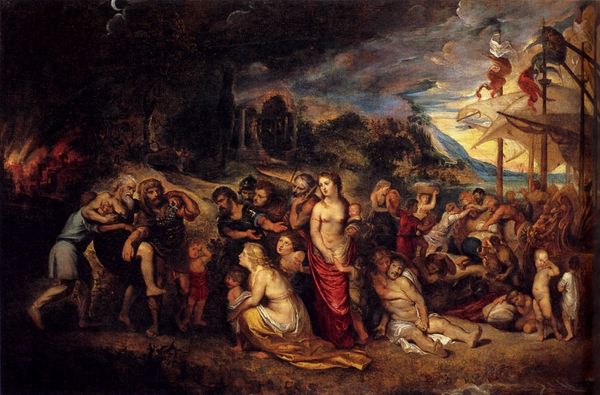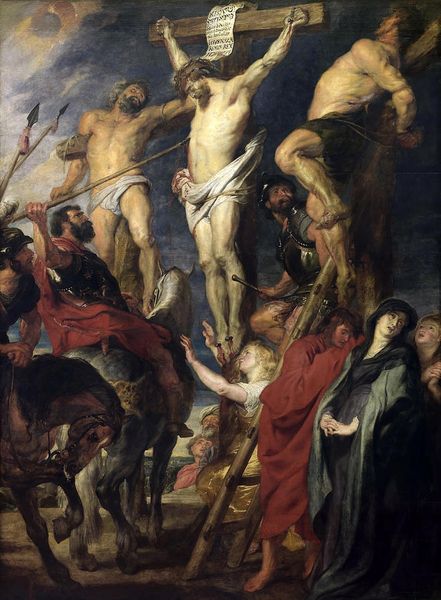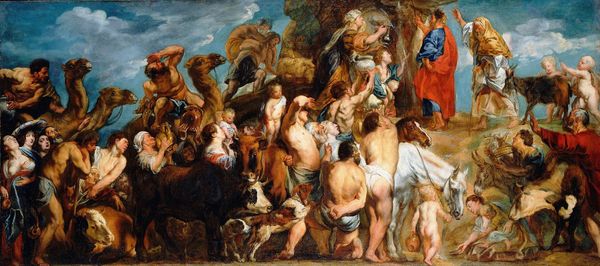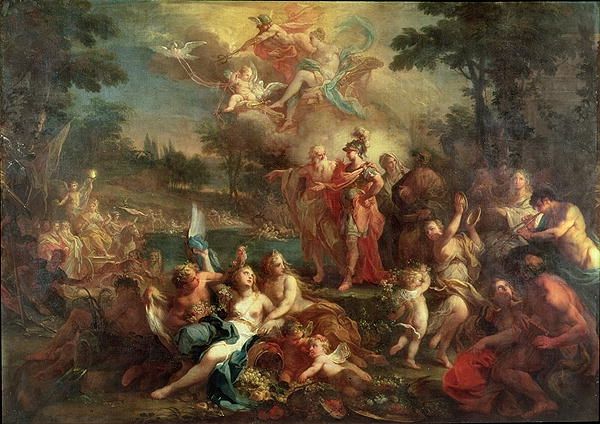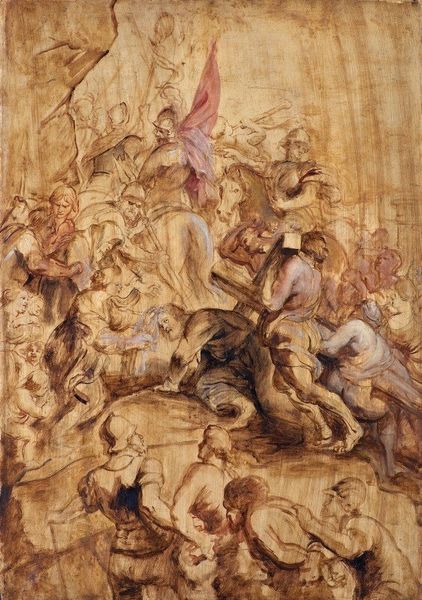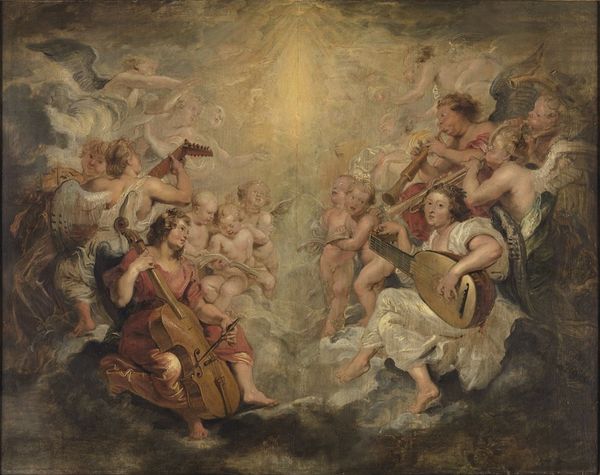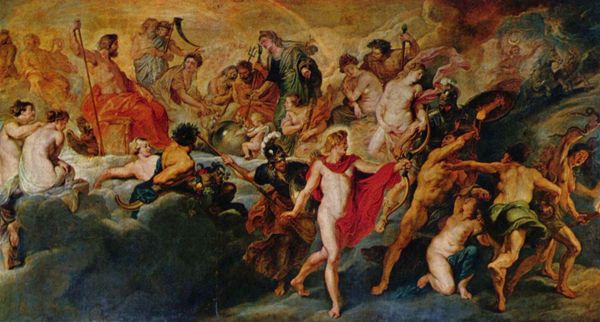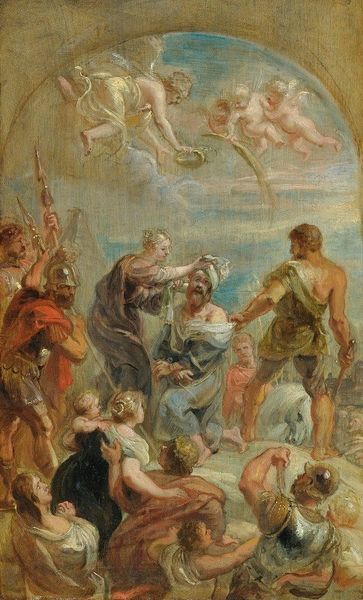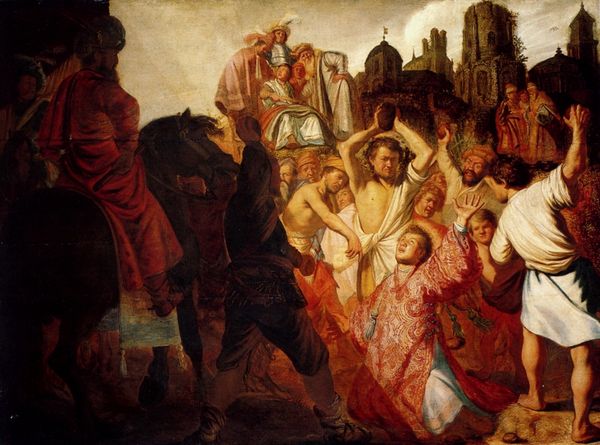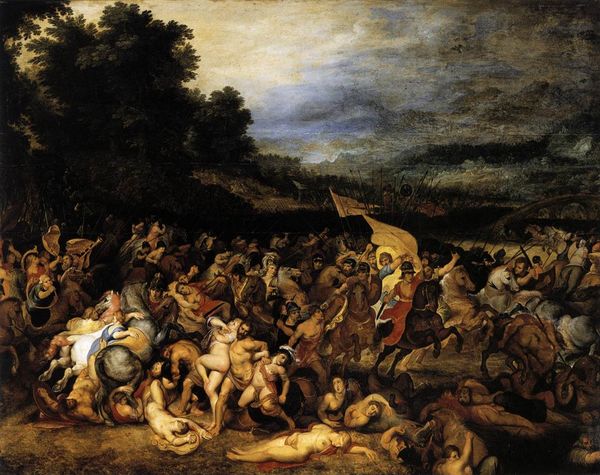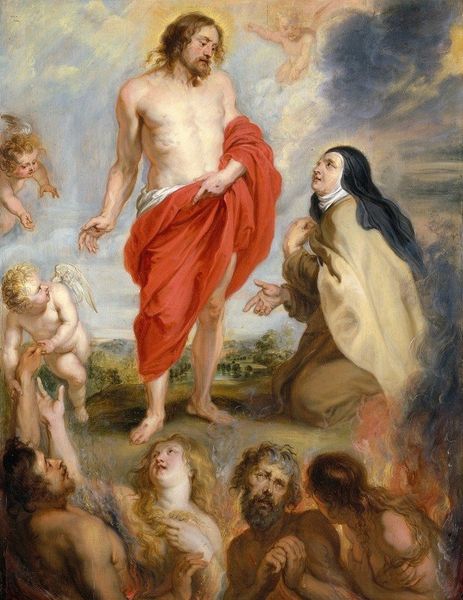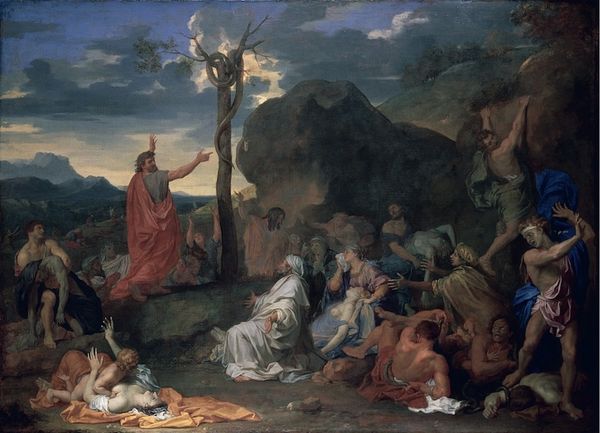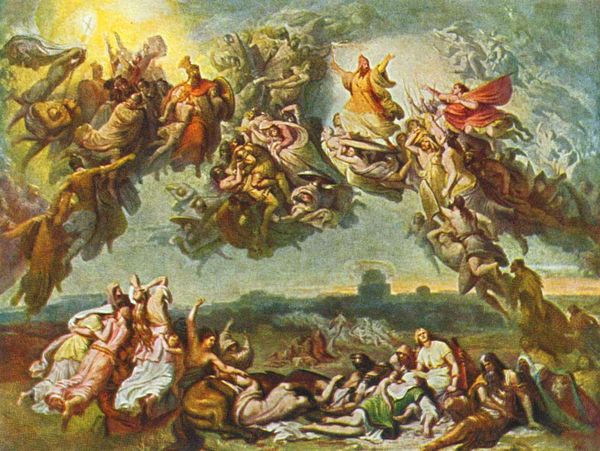
Copyright: Public domain US
Editor: Take a look at Augustus John's "Moses and the Brazen Serpent," an oil painting from 1898. It strikes me as…chaotic. The composition is dense, with figures writhing and reaching towards a central figure holding something aloft. What historical and social context shaped how this imagery was, and still is, interpreted? Curator: This work reflects the late 19th-century interest in historical and religious narratives, seen through a romantic lens. How do you see John engaging with, or perhaps challenging, traditional representations of this biblical scene? Editor: I notice the almost frenzied depiction of the Israelites and Moses's commanding stance with the serpent held high. It's less about pious reverence and more about desperate salvation. Curator: Exactly. This challenges conventional interpretations, moving away from purely religious didacticism and towards an exploration of human emotion and social dynamics in moments of crisis. The painting uses impasto techniques, contributing to the raw, visceral feel, reflecting anxieties of the era and prompting viewers to question authority and divine intervention. How might the rise of scientific rationalism in the late 19th century impact the reception of this work? Editor: So, the painting isn’t just illustrating a bible story, it’s commenting on society’s changing relationship with faith and authority. Curator: Precisely! It reflects how the role of art expanded into questioning existing social and political structures. Editor: It makes me think about how art can reflect societal anxieties and shifts in power. I didn’t see that before. Curator: And hopefully, it encourages viewers to question the narratives presented to them, both then and now.
Comments
No comments
Be the first to comment and join the conversation on the ultimate creative platform.
